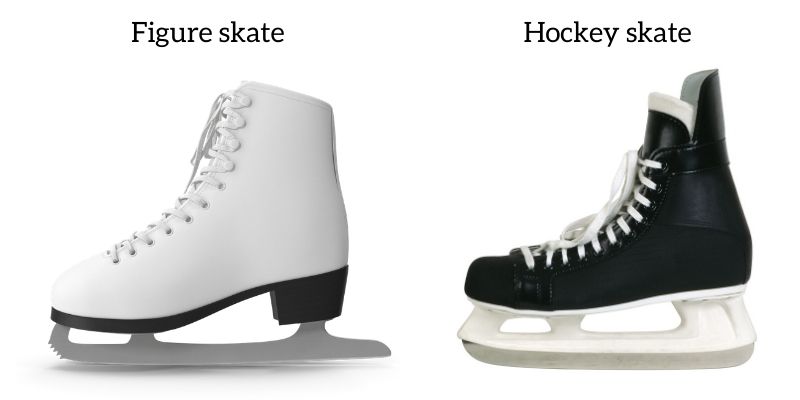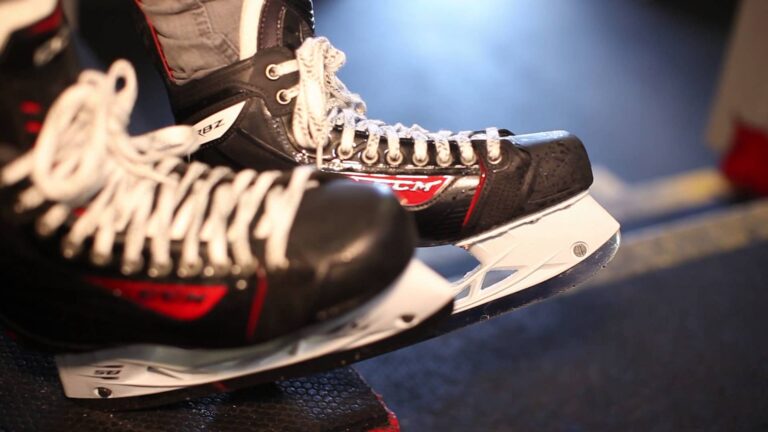Are Hockey Skates Better for Beginners?

Hockey skates are better for beginners because they provide better stability and maneuverability on the ice. Hockey is a fast-paced and physically demanding sport that requires strong skating skills.
For beginners, choosing the right skates is crucial to ensure a good foundation in skating technique. Hockey skates are specially designed to provide better ankle support and a snug fit, allowing beginners to have better control and balance on the ice.
Furthermore, hockey skates have a shorter blade radius, making it easier for beginners to turn and maneuver. This added agility can boost confidence and facilitate quicker progress in learning essential skating skills. Overall, opting for hockey skates as a beginner is a smart choice for those looking to improve their skating ability and enjoy the sport to its fullest potential.
Benefits Of Hockey Skates For Beginners
Hockey skates are a great choice for beginners as they offer several benefits that can enhance stability, speed up the learning curve, and provide greater maneuverability on the ice.
Enhanced Stability: Hockey skates are designed with a lower center of gravity and a tighter fit, offering excellent ankle support. This ensures better stability and balance, which is crucial for beginners who are still developing their skating skills.
Faster Learning Curve: The design of hockey skates, with a shorter blade and a more aggressive pitch, allows beginners to transfer their weight more efficiently. This increases their stride length and power, helping them to quickly improve their skating technique and speed.
Greater Maneuverability: Hockey skates have a shorter and more curved blade profile, enabling quicker turns and tighter spins. This makes it easier for beginners to navigate the ice and execute quick direction changes, enhancing their overall maneuverability on the rink.

Credit: m.youtube.com
Considerations When Choosing Hockey Skates For Beginners
Hockey skates are essential for beginners to ensure a comfortable and safe playing experience. When selecting the right skates, there are several factors to consider:
- Proper Fit and Sizing: The right fit is crucial for beginners. Ill-fitting skates can cause discomfort and affect balance. Ensure the skates provide a snug fit to offer stability and control. Proper sizing charts and trying on different brands can help determine the perfect fit.
- Blade and Holder Configuration: The blade and holder configuration influence performance on the ice. Beginners should opt for skates with a standard blade size and holder configuration to ensure stability and maneuverability. This setup allows for easy turns and quick stops.
- Support and Padding: Adequate support and padding in hockey skates provide ankle stability and reduce the risk of injuries. Look for skates with ample ankle support and comfortable padding to protect against impacts and enhance overall performance.
By considering these factors, beginners can find hockey skates that offer the necessary support, comfort, and functionality. Remember, a well-suited pair of skates contributes to an enjoyable and successful entry into the world of hockey.
Tips For Beginners Using Hockey Skates
Start your ice skating journey with gradual progression and consistent practice. Becoming a proficient skater takes time and effort. Begin by getting comfortable on the ice, using the boards for support if needed, and gradually increase your speed as your balance improves.
Proper skating technique is crucial for beginners. It’s essential to learn the basic skills such as forward and backward skating, stopping, and turning. Practice stride extension, bend your knees, and maintain a low center of gravity to develop stability.
Ensuring safety precautions is important to prevent injuries. Wearing quality protective gear, including a helmet, elbow and knee pads, and wrist guards, provides essential protection. Familiarize yourself with the rules of the rink and skate in designated areas to avoid collisions with other skaters.

Credit: www.fhfsc.ca
Frequently Asked Questions For Are Hockey Skates Better For Beginners
Are Ice Skates Sharp Enough To Cut You?
Yes, ice skates are sharp enough to cut you if not handled carefully. The sharp blades can easily penetrate the skin, causing serious injury. It’s important to wear protective gear and use caution while skating to prevent accidents and potential cuts.
How To Choose Skates For Beginners?
To choose skates for beginners, follow these 5 guidelines: 1. Determine the purpose (recreational or competitive). 2. Consider the fit and comfort, ensuring proper ankle support. 3. Select the appropriate stiffness level based on skill level. 4. Check for quality construction and durability.
5. Consult with experts or experienced skaters for recommendations.
How Do You Hockey Skate For Beginners?
To hockey skate as a beginner, start by getting the right equipment. Bend your knees, keeping your weight over your mid-foot. Push off with one foot while the other glides. Keep your eyes up and practice balancing on one foot.
Make sure to stay low and use your edges to maneuver.
How Do I Choose Good Hockey Skates?
To choose good hockey skates, focus on these factors: fit, ankle support, blade quality, price, and brand reputation. Consider factors like your foot shape, skate size, and how tight the skates feel. Test the ankle support and blade quality before making a decision.
Compare prices and consider reputable brands for reliability.
Conclusion
Ultimately, whether hockey skates are better for beginners depends on various factors. The design and features of hockey skates, such as ankle support and blade quality, can provide stability and control, enhancing the learning experience for beginners. However, personal preference, body type, and skating style also play significant roles in determining which type of skates are best suited for beginners.
It’s essential for individuals to try out different options and consider professional guidance to make an informed decision. Choosing the right pair of skates can positively impact the overall skating experience and facilitate skill development.






